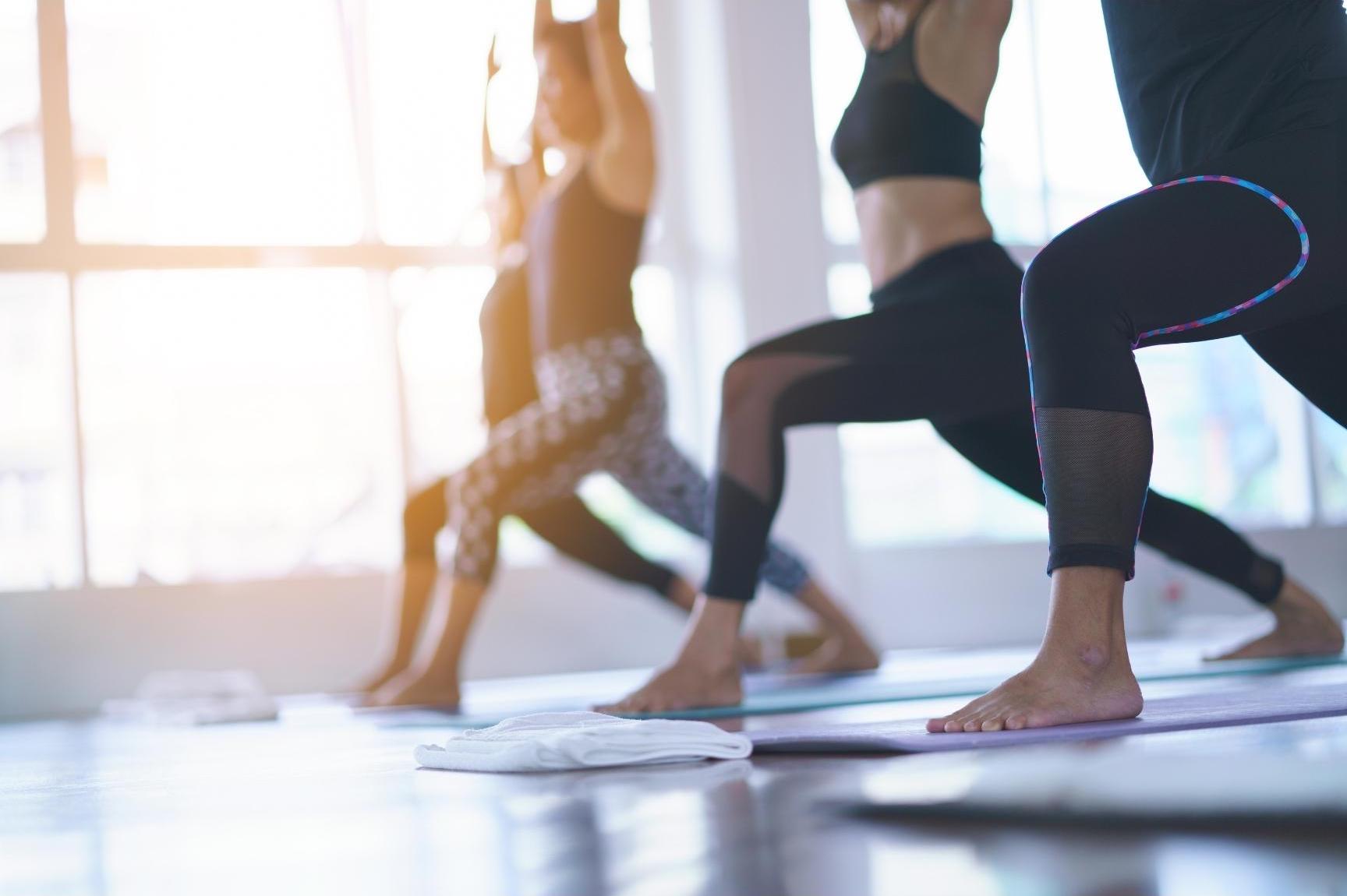In the study, 'Designing a group yoga class for adults with aphasia: "From the minute you walk in... it is communicatively accessible" researchers explored what challenges stroke surivors with aphasia face when participating in recreational activities which rely heavily on language, such as a group yoga class.
In this Q&A with Language Sciences, Dr. Tami Howe, Dr. Lorienne Jenstad and Kelsea Ross, former Speech-Language Pathology Master's thesis student, discuss how aphasia can impact a person's everyday activities and ability to communicate, variables which make participating in recreational activities particularly challenging for those with aphasia, and how to make similar environments more accessible.
What are some ways that aphasia can impact a person’s ability to communicate?
Aphasia is an acquired language disorder caused by focal brain damage, typically a stroke. Conservative estimates suggest that in Canada there are at least 165,000 people living with the disorder. Aphasia affects each person differently and may result in difficulties with understanding speech, expressing one’s thoughts and ideas, reading, writing, and using numbers. The language difficulties mask a person’s underlying competence.
Because communication is involved in almost everything we do, a person with aphasia may have difficulties participating in many everyday activities. Without modifications, activities such as conversing with a friend, banking, making a doctor’s appointment, and taking part in a community art class may be difficult for a person with aphasia. As a result, aphasia may have negative impacts on a person’s relationships, their sense of identity, and their overall well-being.
Can you explain why participating in an activity such as a yoga class may be challenging for adults with aphasia?
Participating in a yoga class may be difficult for adults with aphasia, if the class has not been adapted to be more communicatively accessible. For example, a person with aphasia may have difficulties following the multiple directions given by the yoga teacher about moving into various yoga postures (asanas) and doing breathwork (pranayama). It may be particularly difficult to follow these instructions when the person cannot see the instructor (e.g., when they are supine, in a pose facing away from the instructor, closing their eyes as part of a meditation, or in a class with many students). Also, the use of abstract language such as “open your heart” and long verbally-guided meditation sequences may be difficult for individuals with aphasia to follow. As one participant in our study stated, the students with aphasia were not “gaining the benefits of what yoga really is because…they’re not really understanding what the instructor is trying to tell them.”
Your study identified a comprehensive list of 54 barriers that can impact the participation in a yoga class by adults with post-stroke aphasia. What are some unique barriers that people should be more aware of when working with people with aphasia in similar settings?
Yoga instructors lacking the necessary knowledge and skills to safely modify a class to meet the needs of adults with aphasia was a key barrier identified in our study. As a yoga teacher participant in our study stated, “I don’t think everyone [yoga instructors]…can handle that level of complexity in a class… it’s a lot to manage.” Instructors were reported to speak too quickly or use language that was too complex. For example, one person with aphasia in our study reported, “They [the yoga instructor] said, ‘Do this and do that,’ and then I can’t do anything at all. See, because they moving so fast, and then I can’t do it.”
Other people’s lack of awareness of aphasia is another key barrier to participating in community activities such as a yoga class. When other people such as a yoga studio receptionist or other yoga students lack an understanding of aphasia, they sometimes treat the person with aphasia as if they were incompetent. A recent Canadian study found that only 5.7% of those surveyed had some knowledge of aphasia, despite it being more prevalent than disorders such as Parkinson’s Disease and multiple sclerosis. As a result of these types of barriers, people with aphasia may get frustrated and stop attending the class. Moreover, if the online or hard copy written information about classes and how to register for classes has not been adapted to be more aphasia-friendly (e.g., use of short simple sentences with simplified vocabulary, bolded key words, abundant white space), the person may have difficulties even finding out about or registering for yoga classes in their community.
What are some ways that yoga teachers, or other professional teachers and instructors in similar settings, can make classes more accessible for people with aphasia or other communication barriers?
A key facilitator for making yoga classes and other recreational group programs more aphasia-friendly is to train the teachers about the best practices for providing more communicatively accessible programming for people with aphasia. Communicatively accessible practices include using short directions with simple vocabulary and grammar, delivering the directions at a slower pace, providing non-verbal cues to augment verbal directions, and repeating directions and sequences from class to class. In our study, participants suggested that people with aphasia and speech-language pathologists could be involved in providing a training session to instructors about these best practices and collaborating with them to help to develop an accessible class. In addition, the session could include education about how to create aphasia-friendly written information. Some of these facilitators may also help people with other communication vulnerabilities (e.g., limited proficiency in the dominant language of the community, hearing loss) to participate in yoga classes.
Written by Kelsea Franzke
